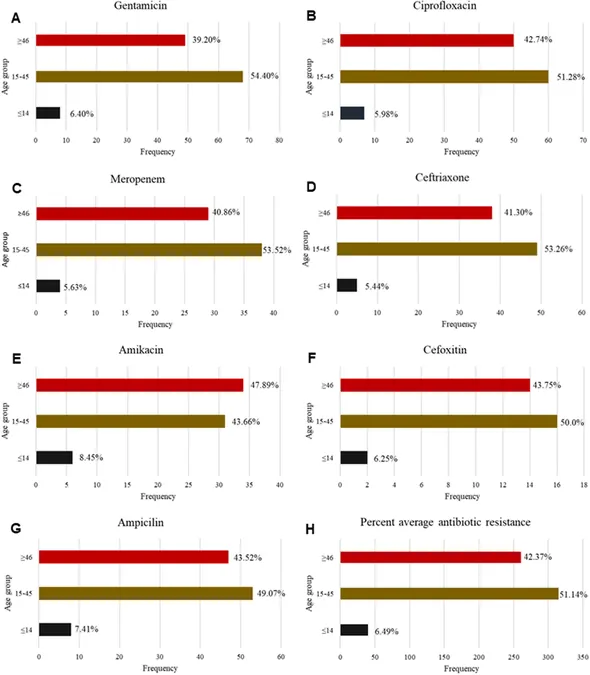
Urinary Tract Infections in Women: Alarming Trends from a Tertiary Hospital in Malawi
2025-04-05
Author: Arjun
Urinary tract infections (UTIs) are among the most prevalent infections affecting women globally, and a retrospective study conducted at Zomba Central Hospital in Malawi has shed light on the troubling patterns of UTI occurrences and antibiotic resistance. With data compiled from January 2020 to December 2021, this study examined the circumstances surrounding UTIs in females of all ages.
Study Design and Patient Profile
The research involved a thorough evaluation of laboratory records representing 340 female patients diagnosed with UTIs. Eligible records included details of the patient’s age, confirmed diagnosis, causative bacterial agents, and results from antimicrobial susceptibility testing. This extensive review not only highlights the extent of the problem but provides critical insights into factors contributing to UTIs.
Findings on Prevalence
This study unveiled a surprising high prevalence of UTIs, standing at 48.53%, particularly striking among women aged 15-45 years. The results emphasize a shocking discrepancy with similar studies conducted globally; for instance, UTIs prevalence is generally lower in countries such as Ethiopia (15%) and Kenya (26.7%). This finding suggests significant public health issues may be at play, potentially linked to inadequate hygiene practices, limited healthcare access, or underlying health conditions specific to the Malawian context.
Age-related Susceptibility
The analysis indicated that women aged 15-45 are unusually susceptible to UTIs, reflecting hormonal influences, sexual activity, and contraceptive methods that might heighten infection risks during these reproductive years. In contrast, younger females (<14 years) demonstrated a much lower incidence of UTIs (6.67%), potentially due to less exposure to common risk factors, suggesting the necessity of targeted prevention strategies for various age groups.
Bacterial Landscape and Resistance Patterns
Escherichia coli emerged as the primary pathogen, responsible for 70-95% of community-acquired UTIs. However, alarming rates of antibiotic resistance were observed, particularly against widely used options like ampicillin (87% resistant) and ceftriaxone (77% resistant). Furthermore, the presence of Serratia marcescens, exhibiting 100% resistance to multiple antibiotics, demands urgent attention, indicating severe treatment challenges.
Implications for Treatment Protocols
The study revealed moderate effectiveness from alternatives such as meropenem (sensitivity rate: 50%) and amikacin (sensitivity rate: 53%). The concerning findings necessitate updating treatment guidelines at Zomba Central Hospital. There’s an essential need for personalized antibiotic prescription based on susceptibility testing to combat rising resistance levels effectively.
Age-Specific Resistance Trends
Resistance patterns differ significantly across age groups, with the 15-45-year demographic exhibiting the highest resistance (51.14%). This correlates with frequent antibiotic prescriptions, hinting that responsible antibiotic usage practices are crucial in mitigating this trend. In contrast, the resistance rate among younger girls was notably low, reinforcing the necessity for tailored health interventions targeting women in higher-risk age brackets.
Conclusion and Future Directions
This retrospective study unveils a daunting situation regarding UTIs in women at Zomba Central Hospital, with not only high prevalence rates but also worrisome levels of antimicrobial resistance. Moving forward, robust public health strategies tailored to address these challenges are paramount. Continued research, vigilant monitoring of resistance trends, and public health awareness campaigns are vital to protecting women from UTIs in Malawi, ultimately improving health outcomes in this vulnerable population. The urgency cannot be overstated—without decisive action, the situation will only worsen.
Stay Informed: Protect Your Health!
To learn more about the issues surrounding UTIs and how to prevent them, ensure to follow up for updates on this critical public health concern. Don’t miss out on vital information that could save lives!





 Brasil (PT)
Brasil (PT)
 Canada (EN)
Canada (EN)
 Chile (ES)
Chile (ES)
 Česko (CS)
Česko (CS)
 대한민국 (KO)
대한민국 (KO)
 España (ES)
España (ES)
 France (FR)
France (FR)
 Hong Kong (EN)
Hong Kong (EN)
 Italia (IT)
Italia (IT)
 日本 (JA)
日本 (JA)
 Magyarország (HU)
Magyarország (HU)
 Norge (NO)
Norge (NO)
 Polska (PL)
Polska (PL)
 Schweiz (DE)
Schweiz (DE)
 Singapore (EN)
Singapore (EN)
 Sverige (SV)
Sverige (SV)
 Suomi (FI)
Suomi (FI)
 Türkiye (TR)
Türkiye (TR)
 الإمارات العربية المتحدة (AR)
الإمارات العربية المتحدة (AR)